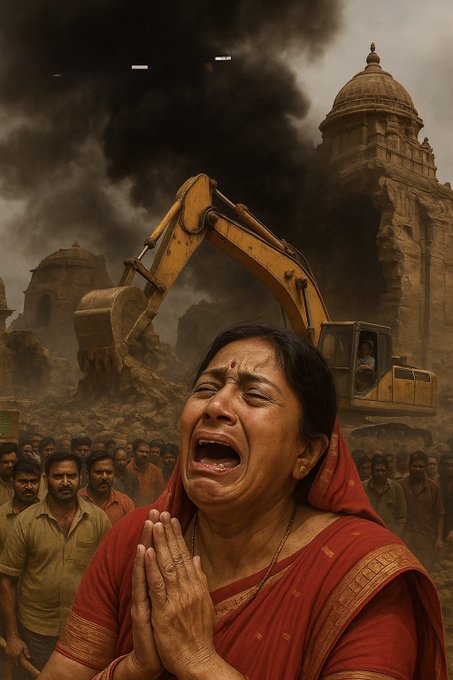1. A Glimpse of an Ancient Legacy
Located in Bhera, a historic town in Sargodha District of Punjab, Pakistan, the Shiva Temple- also known as the Shiv Temple at Bhera, stands as a fragment of a vast cultural and spiritual legacy. Bhera hosts several Hindu temple sites including the Baoliwala Temple, Gulabgarh Temple, a temple in Sheesh Mahal, and specifically, a Shiv Temple at Bhera.
2. Origins Rooted in Ascetic Devotion
The Bhera Shiva Temple dates back more than 1,000 years and is believed to have been built by the Nath yogis—ascetic Shaivite practitioners who revered Shiva as their guru. Constructed with small bricks, possibly pre-dating 1910, its age and craftsmanship hint at an era when devotional and austere spiritual traditions flourished across the subcontinent.
3. Ruins, Resilience, and Historical Memory
Today, what remains of the temple is largely ruined. The structure is devoid of idols and no longer serves as a site of worship. The exact circumstances of its destruction remain ambiguous, though some sources note that it was “completely destroyed by mob” activity at an unknown point in history. Despite the silence that now pervades its courtyards, the temple continues to evoke the spiritual and historical presence of a once-thriving center of Shaivite devotion.
4. Bhera as a Heritage Hub
The town of Bhera has been officially recognized for its historical importance-alongside Taxila and Harappa- as a candidate for heritage city status by the Punjab government. Such initiatives may one day bring the temple the attention it deserves, potentially spurring conservation efforts and renewed public interest.
* Broader Context: Hindu Temple Heritage in Pakistan*
-
Across Pakistan, efforts are underway to preserve significant Hindu heritage sites. For example, the Shivala Teja Singh Temple in Sialkot has undergone restoration by the Walled City of Lahore Authority, which completed 40% of the work as of 2022.
-
The Katas Raj Temple complex in Chakwal District—another sacred Shaivite site—is regarded as one of the oldest religious complexes in the region, drawing devotees to its sacred pond said to have formed from Shiva’s tears.
-
A journalist survey revealed that of an estimated 428 Hindu temples existing at the time of the Partition, only around 20 still survive today, with many having been abandoned, neglected, or repurposed.
Why This Temple Article Matters
For a heritage-focused website, this shrine in Bhera offers rich storytelling possibilities:
-
Cultural Significance: Connect the structure to regional history, Shaivite traditions, and the ascetic Nath yogis.
-
Emotional Resonance: Reflect on themes of loss, memory, and resilience—how sacred sites endure even in ruin.
-
Call to Awareness: Highlight opportunities for heritage recognition, archival research, and potential restoration.
-
Visual Appeal: Use the featured images to draw readers into the temple’s solemn yet evocative presence.
Suggested Article Structure
-
Introduction
-
Briefly introduce the Shiva Temple’s forgotten grandeur and its location in Bhera.
-
-
Historical Foundation
-
Detail the construction by Nath yogis, its age, and architectural elements.
-
-
Decline and Abandonment
-
Describe the current state: ruin, lack of icons, and end of worship.
-
-
Bhera’s Heritage Landscape
-
Situate the temple among other historic sites in Bhera and talk about heritage city plans.
-
-
Comparative Context
-
Mention broader restoration efforts at sites like Sialkot’s Shivala Temple and Katas Raj.
-
-
Why It Still Matters
-
Reflect on significance: for history, spirituality, cultural memory, and potential tourism.
-
-
Conclusion & Vision
-
Invite preservation advocacy and deeper public engagement.


-






